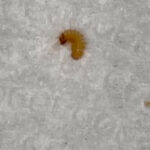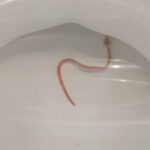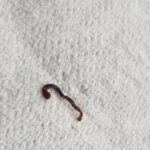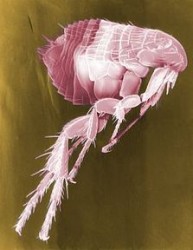
“What is the most effective treatment for tapeworm?” That is the simple question we received from a reader, but, as always seems to be the case, we have several ways to complicate it, as the best treatment for tapeworm depends on several factors. First, who is suffering from the tapeworm infection? Is this a human tapeworm infection, or is a dog or cat infected with tapeworm? Also, there are a few different kinds of tapeworm, which also bears on tapeworm treatment options. We can’t even leave the word itself alone, as “tapeworm” is often spelled “tape worm,” although the latter spelling is incorrect. We’re writing an article, not a book, so we’ll have to confine ourselves to human tapeworm infections and explore the most effective (i.e., best) treatment for tapeworm in humans.

We must say up front that if you suspect that you (or anyone else you know) has tapeworm, get thee to a doctor. Tapeworm infections need to be addressed by medical professionals. Tapeworms can grow to be over 12 feet long and they can live inside your intestines for years. That said, tapeworm infections are rare, thanks largely to U.S. laws that regulate the feeding practices of domestic food animals, and somewhat surprisingly (given the size they can grow to), they rarely cause the blockage of one’s intestines. The tapeworms that come from pork (Taenia solium), however, can migrate out of the intestines, causing damage to various tissues in the body (including the heart and brain), a condition known as cysticercosis.
Humans generally become infected with tapeworm when they eat raw or undercooked meat from infected animals. An animal that is infected with tapeworm can pass thousands of eggs in their feces. If meat is handled with extreme recklessness, it could become contaminated with the tapeworm eggs in feces. A piece of meat can also be infected if cysts in an animal’s muscle tissue contain tapeworm larvae. If the contaminated meat is ingested, a tapeworm egg can quickly become a tapeworm larva, which in turn can grow into an adult tapeworm in the intestines. Of course, sometimes the first stage is skipped, as tapeworm larvae can be directly ingested.
Even when an adult tapeworm is living in an individual’s intestines, he or she often experiences no symptoms, making detection of a tapeworm infection difficult. However, sometimes afflicted individuals experience stomach pains, loss of appetite, or diarrhea. (The pork tapeworms mentioned above – the ones that can leave the intestines – often cause more extreme symptoms, like seizures if they enter a victim’s brain.) Once a tapeworm infection is detected, the treatment options are extremely straightforward. A medication is taken by mouth, and most of the time only one dose is needed. The most common medication to treat a tapeworm infection is praziquantal, but niclosamide is sometimes prescribed as well.
So, to get back to our reader’s question, the most “effective” treatment for tapeworm is really the only one. A medication is taken orally, and that’s all there is to it. The real trick is figuring out you have tapeworm. Once this is determined, the treatment is simple.
All About Worms is always free, always reader-supported. Your tips via CashApp, Venmo, or Paypal are appreciated! Receipts will come from ISIPP Publishing.
















